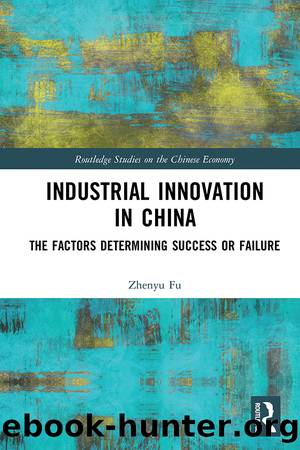Industrial Innovation in China by Zhenyu Fu

Author:Zhenyu Fu [Fu, Zhenyu]
Language: eng
Format: epub
Tags: Social Science, Ethnic Studies, General, Research, Regional Studies
ISBN: 9781003206101
Google: BFFkzgEACAAJ
Barnesnoble:
Goodreads: 57632901
Publisher: Routledge
Published: 2021-01-15T03:13:46+00:00
Basic information about Yulin and semi-coke
As Yulin City is not well known and most people are not familiar with semi-coke, some background information will be given before discussing this case. Yulin is a prefecture-level city in the northern Shanbei region of Shaanxi province, China. It borders Inner Mongolia to the north, Shanxi to the east and Ningxia to the west. It has an administrative area of 43,578 km² (16,826 square miles) and a population of 3,380,000.
Yulin used to be a very poor city. It was the home of Li Zicheng (1606â1645), a rebel leader who overthrew the Ming Dynasty and established the Shun Dynasty. He led his rebellion because his hometown was so poor that he would have starved to death otherwise. In ancient China, Yulin was always a border city; the Great Wall passes through it. It is a dry city, surrounded by desert or desert steppe. The closest city to the south is Yanâan, which was the centre of the Chinese Communist revolution from 1936 to 1948.
Thanks to the discovery of a large coalfield, Yulinâs economy began to take off around 2000. Its GDP grew at a staggering speed, and together with Ordos City to the north it became nationally famous for its unparalleled development. In 2000 Yulinâs GDP was only approximately 10 billion yuan (about US$1.21 billion), but by 2010, this had increased to about 170 billion yuan (about US$25 billion), 17 times the previous figure. This can be attributed to the rapid development of the coal industry in the area.
Consequently, when the Chinese coal industry faces severe problems, so does Yulinâs economy. A turning point occurred in 2012; I happened to be in the city at that time. The cityâs annual GDP growth rate in 2011 was 15%, but the same figure for 2012 was 12%. Over the next few years GDP plummeted; the figures for 2013, 2014 and 2015 were 8.8%, 9.0% and 4.3% respectively.1
Download
This site does not store any files on its server. We only index and link to content provided by other sites. Please contact the content providers to delete copyright contents if any and email us, we'll remove relevant links or contents immediately.
Life 3.0: Being Human in the Age of Artificial Intelligence by Tegmark Max(5476)
The Sports Rules Book by Human Kinetics(4297)
The Age of Surveillance Capitalism by Shoshana Zuboff(4214)
ACT Math For Dummies by Zegarelli Mark(3996)
Unlabel: Selling You Without Selling Out by Marc Ecko(3591)
Blood, Sweat, and Pixels by Jason Schreier(3566)
Hidden Persuasion: 33 psychological influence techniques in advertising by Marc Andrews & Matthijs van Leeuwen & Rick van Baaren(3474)
The Pixar Touch by David A. Price(3368)
Bad Pharma by Ben Goldacre(3357)
Urban Outlaw by Magnus Walker(3342)
Project Animal Farm: An Accidental Journey into the Secret World of Farming and the Truth About Our Food by Sonia Faruqi(3178)
Kitchen confidential by Anthony Bourdain(3014)
Brotopia by Emily Chang(3002)
Slugfest by Reed Tucker(2943)
The Content Trap by Bharat Anand(2863)
The Airbnb Story by Leigh Gallagher(2800)
Coffee for One by KJ Fallon(2570)
Smuggler's Cove: Exotic Cocktails, Rum, and the Cult of Tiki by Martin Cate & Rebecca Cate(2473)
Beer is proof God loves us by Charles W. Bamforth(2375)
